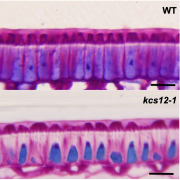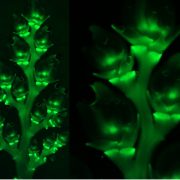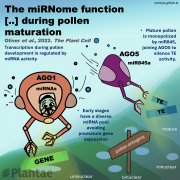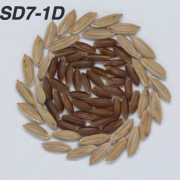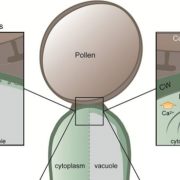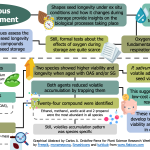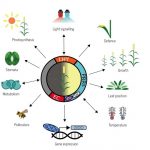Review: Postzygotic reproductive isolation established in the endosperm: mechanisms, drivers and relevance ($) (Phil. Trans. R. Soc. B)
 In this fascinating review, Köhler and colleagues show us that the seed endosperm is not only a nutritive tissue that supports embryo growth, it also nourishes the course of plant evolution. When closely related species or species with different ploidy levels hybridize, endosperm development deviates from its standard pattern and impedes the proper formation of the embryo. In the first case, defects in endosperm formation arise from differences in the endosperm balance number (i.e., the effective ploidy level in the endosperm of a given species). In species with different ploidy levels, the defective endosperm development is attributed to a mechanism known as the “triploid block”. Current evidence suggests that genomic imprinting plays a significant role in both mechanisms. For instance, studies carried in Arabidopsis thaliana have shown the participation of genes preferentially expressed in either pollen grain (such as PHERES1) or the egg cell (MEDEA) in establishing these barriers. Some of the genes seem to interact with the auxin biosynthesis pathway, a well-known regulator of endosperm development. As a result, this is an obligate reading for anyone interested in the role of seed endosperm in reproductive isolation, the molecular basis behind it, and its implications for angiosperm evolution. (Summary by Carlos A. Ordóñez-Parra @caordonezparra) Phil. Trans. R. Soc. B. 10.1098/rstb.2020.0118
In this fascinating review, Köhler and colleagues show us that the seed endosperm is not only a nutritive tissue that supports embryo growth, it also nourishes the course of plant evolution. When closely related species or species with different ploidy levels hybridize, endosperm development deviates from its standard pattern and impedes the proper formation of the embryo. In the first case, defects in endosperm formation arise from differences in the endosperm balance number (i.e., the effective ploidy level in the endosperm of a given species). In species with different ploidy levels, the defective endosperm development is attributed to a mechanism known as the “triploid block”. Current evidence suggests that genomic imprinting plays a significant role in both mechanisms. For instance, studies carried in Arabidopsis thaliana have shown the participation of genes preferentially expressed in either pollen grain (such as PHERES1) or the egg cell (MEDEA) in establishing these barriers. Some of the genes seem to interact with the auxin biosynthesis pathway, a well-known regulator of endosperm development. As a result, this is an obligate reading for anyone interested in the role of seed endosperm in reproductive isolation, the molecular basis behind it, and its implications for angiosperm evolution. (Summary by Carlos A. Ordóñez-Parra @caordonezparra) Phil. Trans. R. Soc. B. 10.1098/rstb.2020.0118


